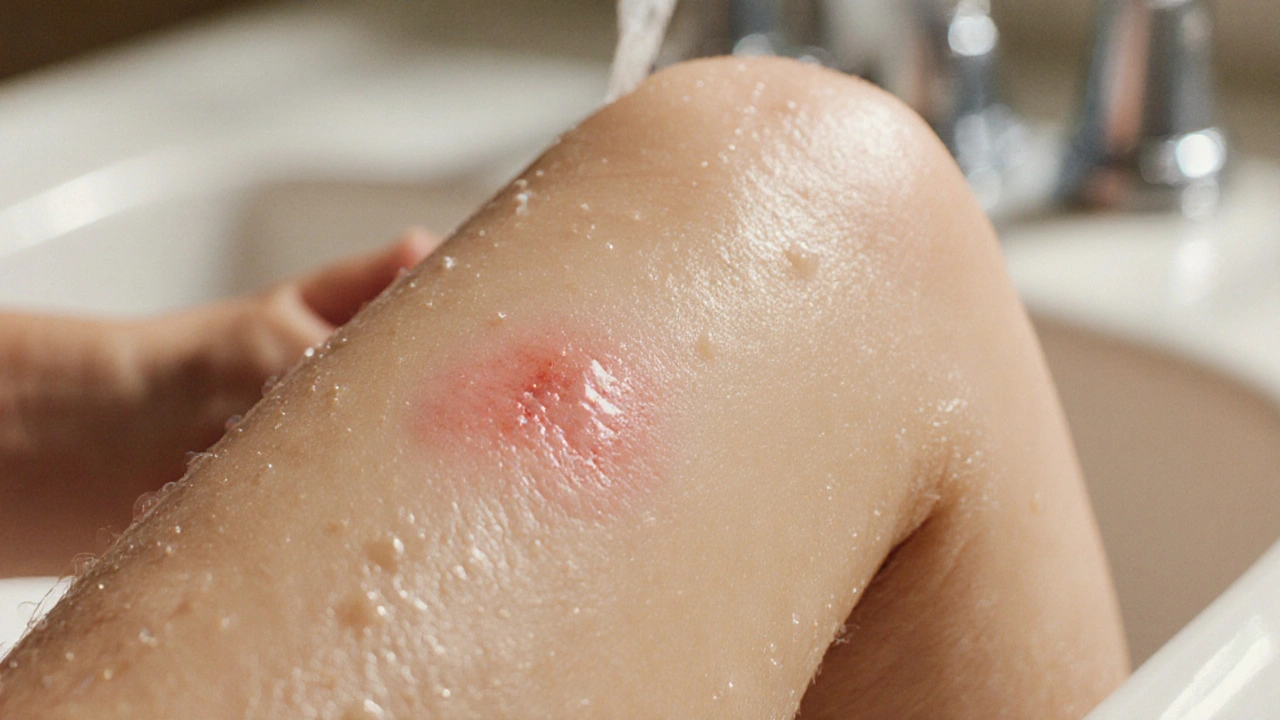How to Prevent Infection in Abrasions – Simple Steps to Keep Cuts Clean
Got a scrape from a bike ride or a kitchen accident? The first thing you want is to stop it from getting infected. The good news is that preventing an infection doesn’t require a pharmacy degree – just a few basic habits and the right products.
Clean the Abrasion Properly
Start by washing your hands with soap and warm water. Dirty hands are the biggest source of germs, so this step alone can cut the risk dramatically. Once your hands are clean, rinse the abrasion gently with clean, cool water. Use a mild soap if the wound is dirty, but avoid harsh detergents that can irritate the tissue.
After the rinse, pat the area dry with a clean gauze pad. Do not rub – rubbing can tear fragile skin and push bacteria deeper. If you have a saline solution (you can buy it at a pharmacy or make a simple mix of 1 teaspoon of salt in 1 cup of boiled, cooled water), dab a little onto the wound. Saline is gentle and helps flush out debris without harming the skin.
Next, apply a thin layer of an over‑the‑counter antiseptic. Common options are povidone‑iodine (Betadine) or chlorhexidine (Hibiclens). These products kill most bacteria on contact. Let the antiseptic air‑dry for a minute before moving on – this ensures it works properly.
Protect and Monitor the Wound
Once the abrasion is clean and dry, a light antibiotic ointment (like bacitracin or mupirocin) can create a barrier against germs. Spread just enough to cover the surface; too much can trap moisture and slow healing.
Cover the wound with a sterile, non‑stick dressing. For small cuts, a simple adhesive bandage works well. Larger abrasions may need a gauze pad secured with medical tape. Change the dressing at least once a day, or sooner if it becomes wet or dirty.
While you’re watching the wound heal, keep an eye out for signs of infection: increasing redness, swelling, warmth, pus, or a fever. If any of these appear, it’s time to see a healthcare professional. They might prescribe a stronger topical antibiotic or a short course of oral antibiotics.
Finally, give your body the nutrients it needs to repair skin. Stay hydrated, eat protein‑rich foods, and include vitamin C‑rich fruits or vegetables. Good nutrition speeds up the healing process and reinforces your immune system.
In short, the recipe for a clean, infection‑free abrasion is simple: wash hands, rinse the wound, use a gentle antiseptic, apply a thin antibiotic layer, cover with a sterile dressing, and monitor for changes. Follow these steps and you’ll be back to normal in no time without the hassle of an infection.
Infection in Abrasions: Essential Facts and Care
Learn how infections develop in abrasions, spot warning signs, prevent bacterial growth, and treat infected scrapes effectively.
